A tiny republic with a big heart: Exploring Uzupis in Lithuania
The self-proclaimed republic of Uzupis could be seen as a joke, but its foundation in Lithuania's capital has serious roots. DW's Heidi Fuller-Love meets with locals to learn more.
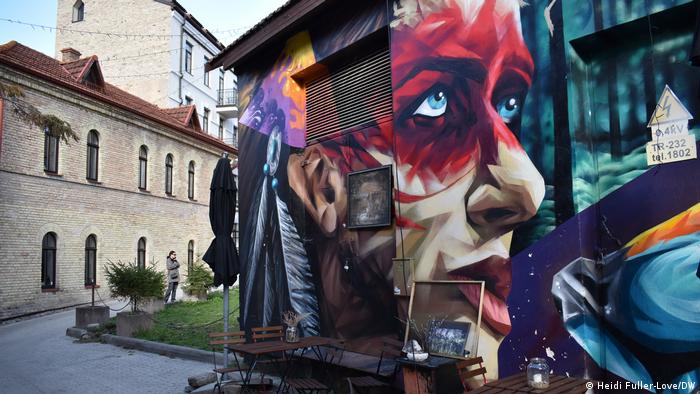
Let's take a tour through the self-proclaimed republic of Uzupis in Vilnius
Vilija Dovydenaite is the only official tour guide of Uzupis, one of the world's smallest republics, covering an area of less than 1 square kilometer, with barely 7,000 inhabitants. It's situated in the Lithuanian capital Vilnius.
Dovydenaite explains that Uzupis means "over the river" as we cross the Vilnele river on a narrow bridge and enter the republic at the heart of Vilnius. Dovydenaite points to a bronze mermaid sculpture tucked into a gap in the wall above the fast-flowing river. "Be careful — if you look into her eyes you'll never want to leave," she warns.
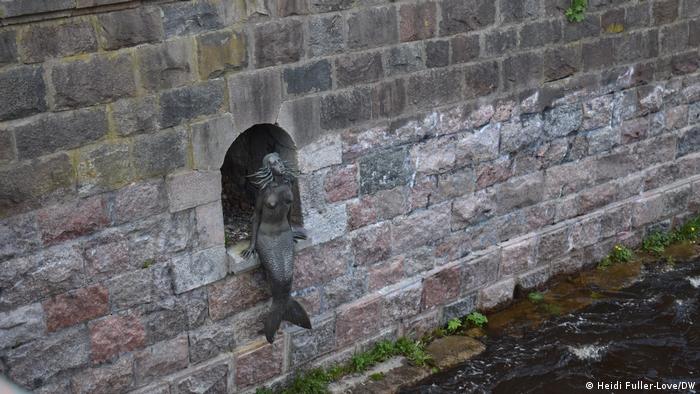
The bronze mermaid by sculptor Romas Vilciauskas
Down at heel neighborhood...
Home to a thriving Jewish population before World War II, the small independent neighborhood of Uzupis was left derelict after the Holocaust. Empty houses were used as brothels and squats. "At first, artists moved here because rents were cheap," explains Dovydenaite.
It was a local photographer, Saulius Paukstys, who then got the ball rolling. Paukstys hit on the idea of replacing one of Lenin's statues, which had been torn down at the end of the Soviet regime, with a Frank Zappa bust, despite the fact that the rockstar had never visited Lithuania. Two years later, on April Fool's Day 1997, Paukstys, along with the republic's current president, filmmaker Roman Lileikis, declared independence for the Republic of Uzupis, saying they wanted to create a place where people could be themselves without worrying about social mores. "It was all completely absurd, but it seemed to be a good test of our newfound democracy and freedom," Dovydenaite says.
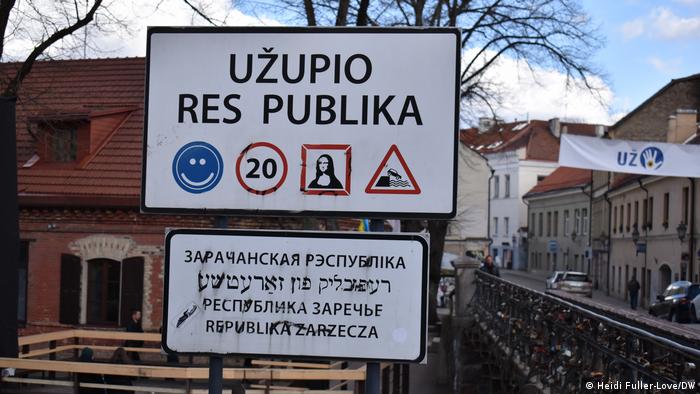
Attention, you're now crossing the border to the republic of Uzupis
She tells me that the self-proclaimed Republic of Uzupis has its own president, its own constitution, its own currency and four national flags — one for each season.
"In bad times the last thing you think of is art or poetry, so life was difficult for people who were creative and not adapted to life's daily struggles. This group of people were looking for a way to survive — they were looking for a new way to live together after the Soviet times when tolerance and respect did not exist," she says.
...transforms into an upmarket district
Although the Lithuanian government was initially hostile to the project, they soon got onboard. Within a few decades, the runaway republic had become accepted — although it's not recognized as an official nation by foreign governments.
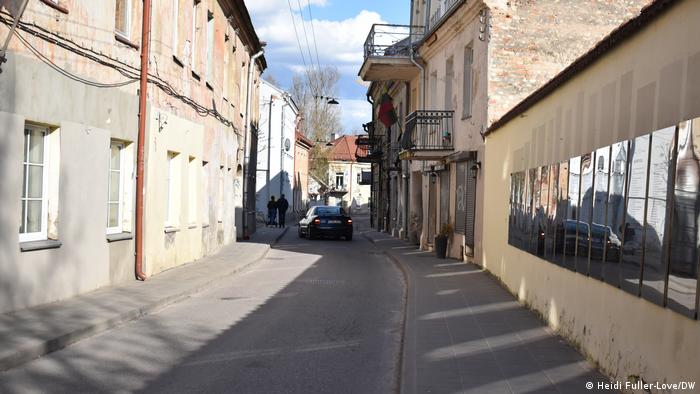
You never know what you'll find when strolling the streets of Uzupis
Despite being close to the city's old town, Uzupis, which was surrounded by the river on three sides, was cut off from the rest of Vilnius until the 16th century when a bridge was built to link it to the larger city beyond. Today, there are designer boutiques, trendy cafes and secret courtyards which are decorated with quirky objects. "Ironically, this is now the second most expensive part of the city after the old town — no struggling artist could afford to buy an apartment here now," Dovydenaite says.

The statue of Archangel Gabriel is an important landmark in Uzupis
A tourist magnet
We visit the Uzupis Art Incubator, the first of its kind in the Baltic States. Artists from around the world come here to create experimental works. Next, we stop at a long wall covered in metal signs. Dovydenaite tells me this is Uzupis' constitution, which has been translated into over 50 different languages. There are more than forty articles, including: "Cats have the right to not love their owners" and "everyone has the right to be in doubt, but this is not an obligation."
"It's written in a funny way, but if you put it in the right context it has a lot of meaning," Dovydenaite says. "It's all about people learning to think for themselves again and express themselves freely after 70 years of oppression. You could say this is the first written document of human rights in post-Soviet Lithuania."
From quirky installations to colorful street art, there's plenty to see in Uzupis. The best time to visit this district, which is the most popular area for tourists in Vilnius, is on April Fool's Day. On the anniversary of the republic's independence, the borders are manned by special guards who stamp visitors' passports, while a former water fountain flows with beer, and the art and music events take place in the streets.

Street art can be found all around Uzupis
Artists lead anti-war protests
Since Russia's invasion of Ukraine on February 24th, many of the republic's 7,000 inhabitants have been involved in organizing city-wide protests and initiatives to demonstrate solidarity with Ukraine.
I meet Neringa Rekasiute, a local artist who has been involved in a number of art activism projects, such as her video "Swimming Through," set in the pond outside the Russian embassy.
"We dyed the pond red and then Ruta Meilutyte, an Olympic athlete, swam across it," she explains. "I wanted to show that the Russians have blood on their hands, but I also wanted to show hope, to show Ukrainians swimming through all this blood to reach freedom."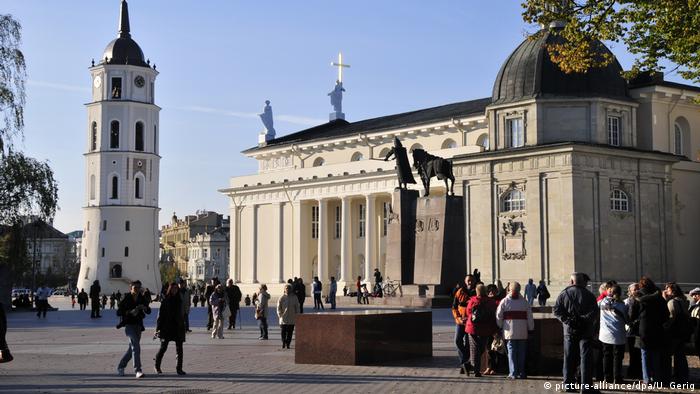
EXPLORING EASTERN EUROPE: LITHUANIA
Vilnius: Pearl of the Baltic
Vilnius, the exciting, multicultural capital, has sidewalk cafes, pubs and bars with live music, picturesque lanes, a castle complex and a great number of churches. Its historical center was declared a UNESCO World Heritage Site in 1994. One of the best-known sights in Vilnius is the Cathedral Basilica of St. Stanislaus and St. Ladislaus, seen here.
1234567891011
Edited by: Benjamin Restle
No comments:
Post a Comment